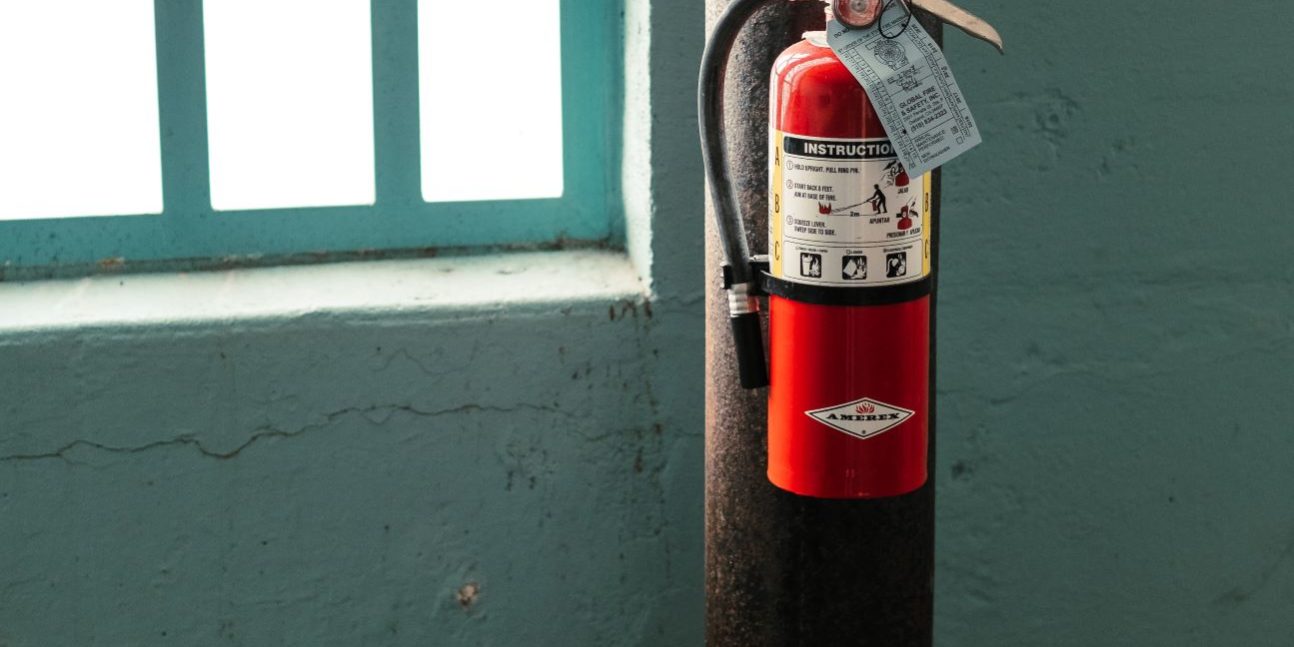Considering the cost, frequency and loss of life related to residential fires, it’s important for homeowners to have loss-control measures in place. When properly selected, placed and maintained, a fire extinguisher can be a powerful tool to prevent severe fire loss. The best thing is that a fire extinguisher is a relatively cheap investment, as prices start at around $20. It’s important to become familiar with the different classes of fire extinguishers. There are five classes, with each one based on what type of fire the equipment is capable of extinguishing.
Below are the five classes of fire extinguishers and what they do:
Class A Fire Extinguishers
Color – green
Geometric symbol – triangle
Picture – burning garbage can and woodpile
This class of fire extinguisher is intended to be used on ordinary solid combustibles. These types of fires might involve cloth, wood, rubber, paper or certain types of plastic.
Class B Fire Extinguishers
Color – red
Geometric symbol – square
Picture – container of fuel and burning puddle
This class of extinguisher is intended to be used on flammable liquids and gasses. These types of fires might involve lacquers, gasoline, alcohol, diesel oil, oil-based paints or flammable gas.
Class C Fire Extinguishers
Color – blue
Geometric symbol – circle
Picture – burning outlet and electric cord plug
This class of extinguisher is intended to be used on electrical equipment. It can be used for fires that involve an appliance, electrical wiring, circuit breaker or electrical outlet.
Class D Fire Extinguishers
Color – yellow
Geometric symbol – star or decagon
Picture – burning bearing and gear
This class of extinguisher is intended to be used on combustible metals. These fires might involve magnesium, potassium, sodium or titanium. It’s important to note that some Class D fire extinguishers will work on multiple metal types, but others are metal-specific.
Class K Fire Extinguishers
Color – black
Geometric symbol – hexagon
Picture – burning pan
This class of extinguisher is intended to be used on combustible cooking fires. It can be used to put out fires from cooking oils and fats.
Extinguisher tips:
- Fire extinguishers are important fire protection tools. However, it’s vital to know the fire type and extinguisher class before attempting usage. Using the wrong extinguisher on the wrong fire can make the fire worse and cause life-threatening injury.
- It’s extremely important for all members of the household, babysitters, housekeepers and any other potential user to know how to safely and correctly use the fire extinguisher. Since most will not be using an extinguisher on a regular basis, it’s also important to periodically review the instructions.
- Because fires may often involve a combination of elements, most fire protection experts recommend a fire extinguisher with an ABC rating.
- Experts recommend that a medium-sized fire extinguisher be placed in the kitchen and garage. An extinguisher should also be placed on each additional floor of the home.
- All extinguishers should be inspected annually and maintained by a professional fire equipment supplier. If not properly maintained, your unit might not discharge when needed. There’s also the risk of it rupturing when pressurized, which can result in serious injury.
- Having fire extinguishers in the home may reduce the cost of home insurance. Contact us find out if a discount for fire loss-prevention measures is offered.
The takeaway
Fire extinguishers are vital protection against fire loss in your home, but they must be properly selected, placed and maintained. Also make sure you have the right extinguishers on hand.
*If you have an insurance need, we have a solution. We provide solutions for home & auto, health and Medicare insurance, life & dental coverage, employee benefits and commercial insurance. Give us a call at 803-286-1161.








